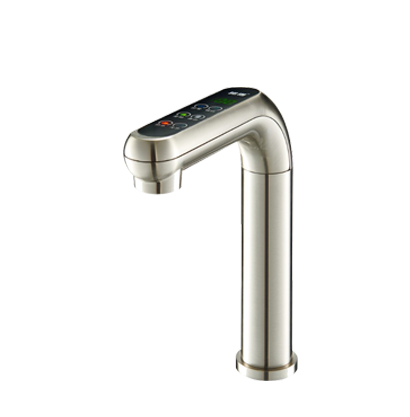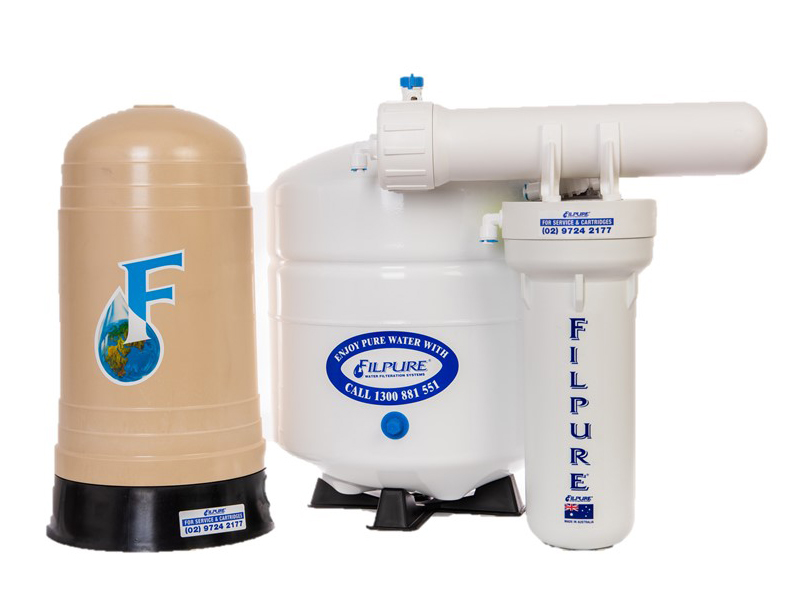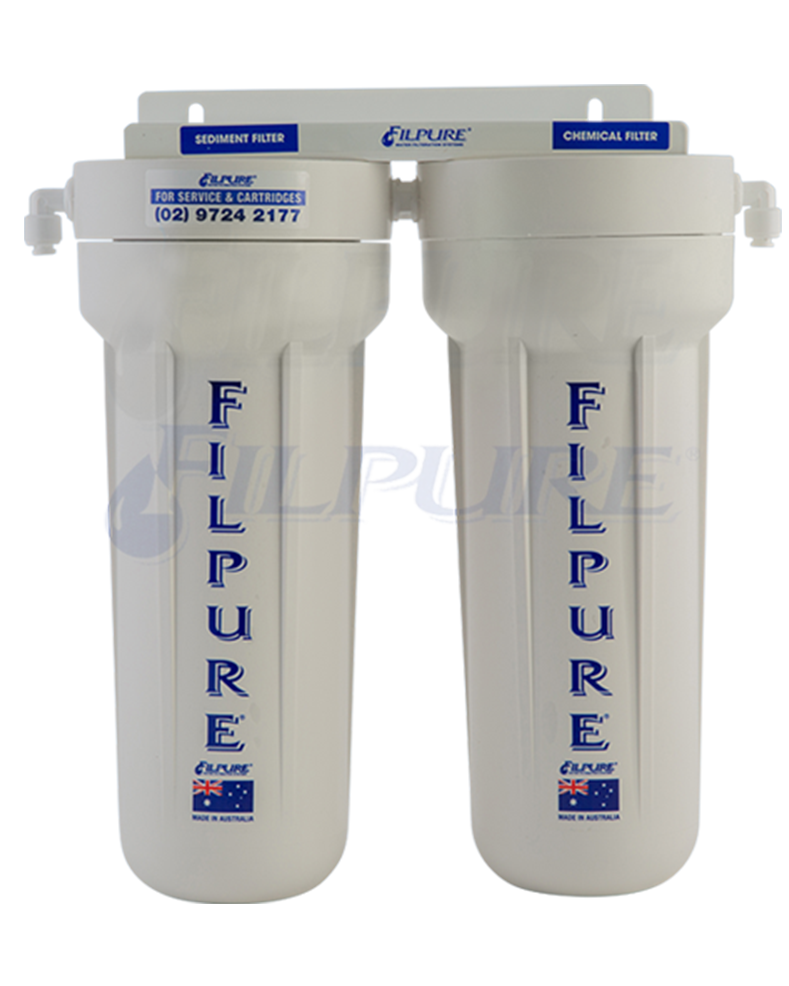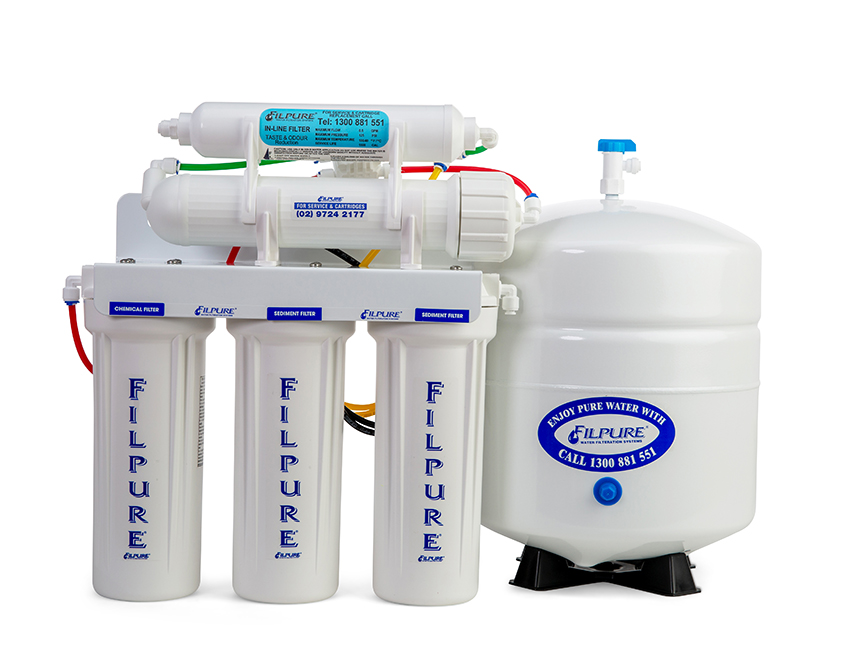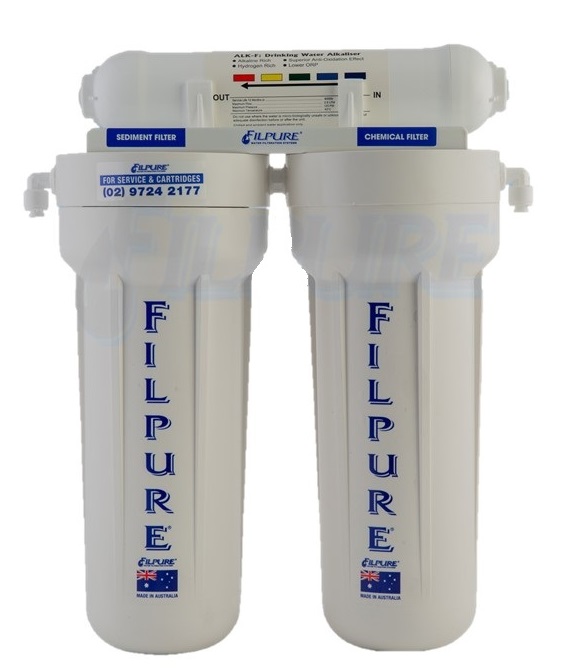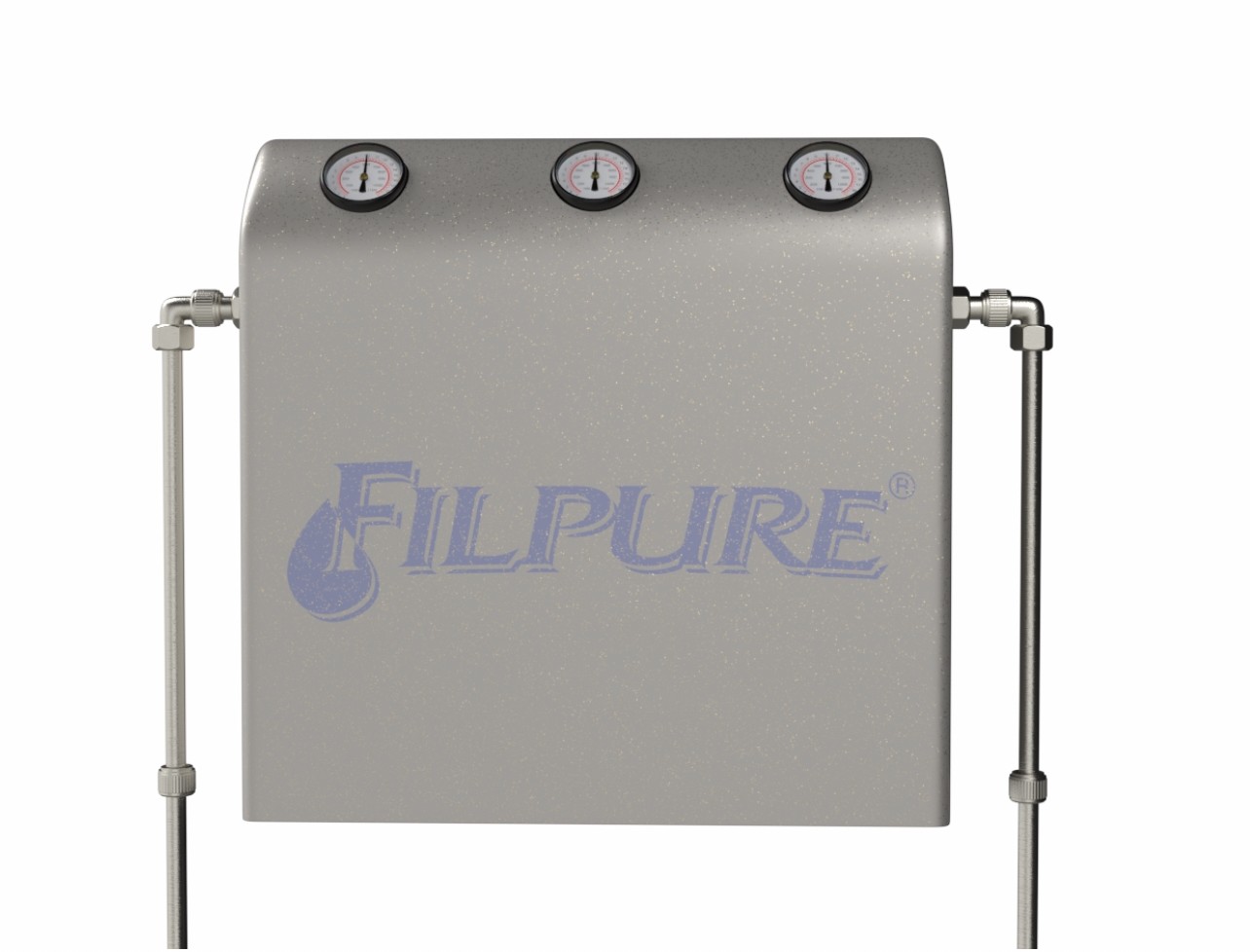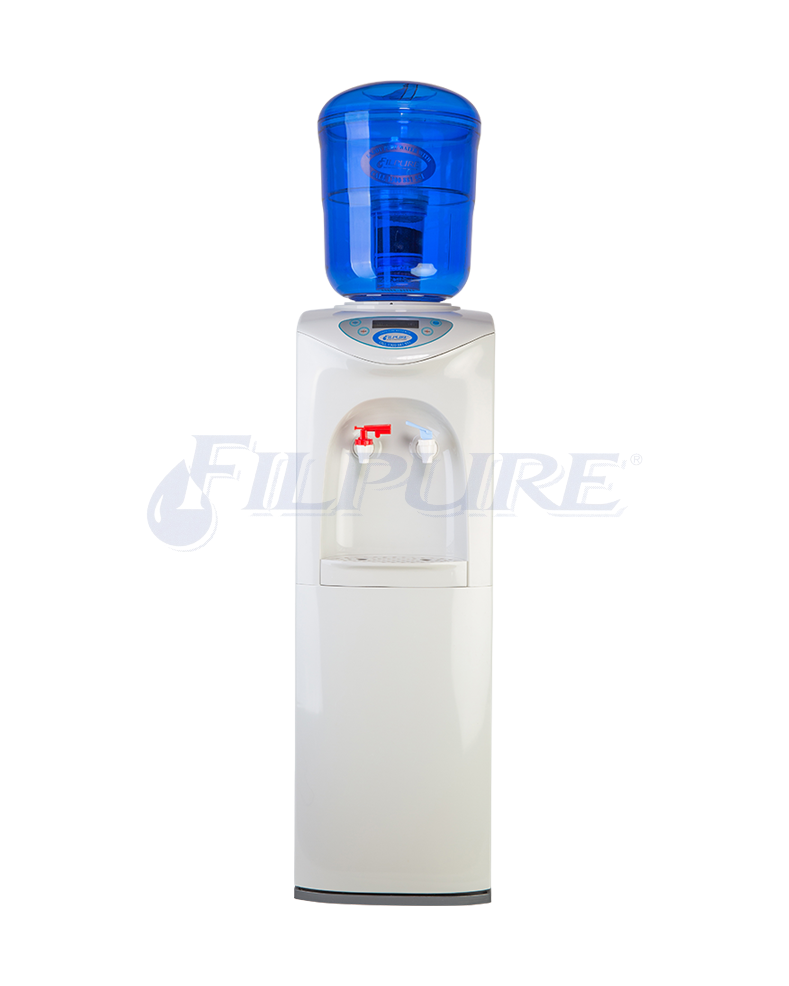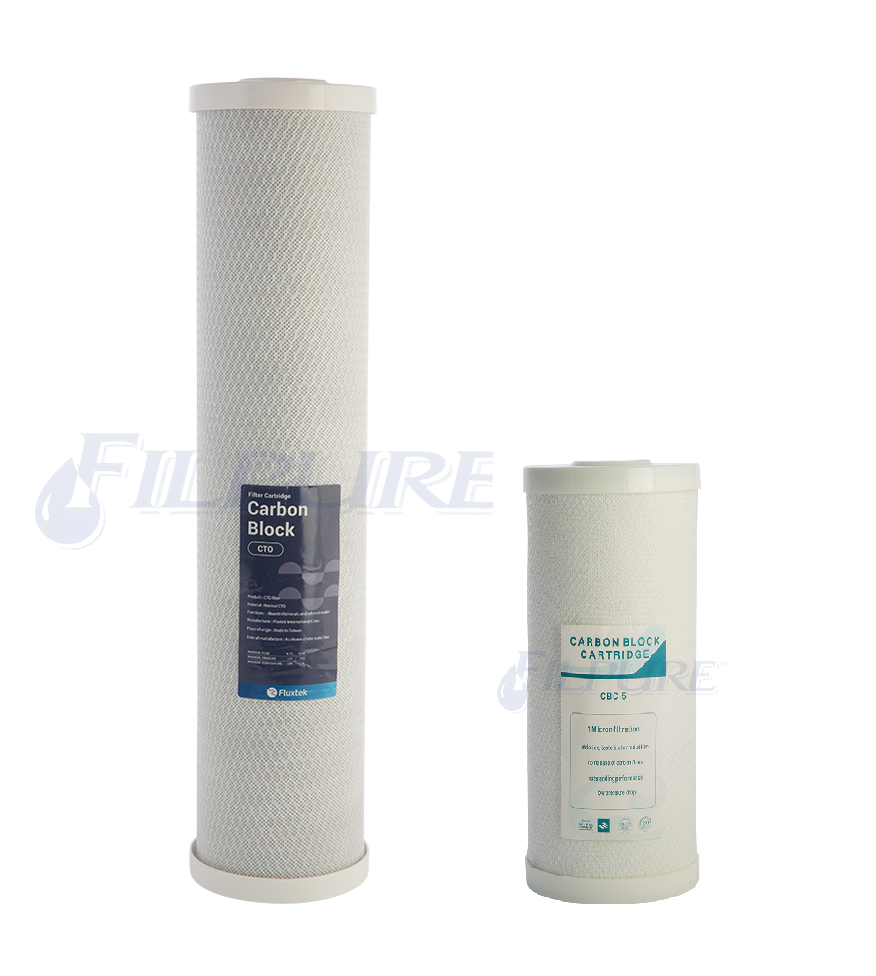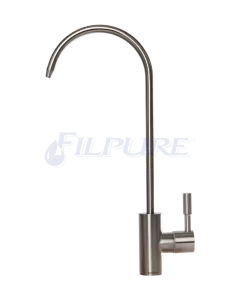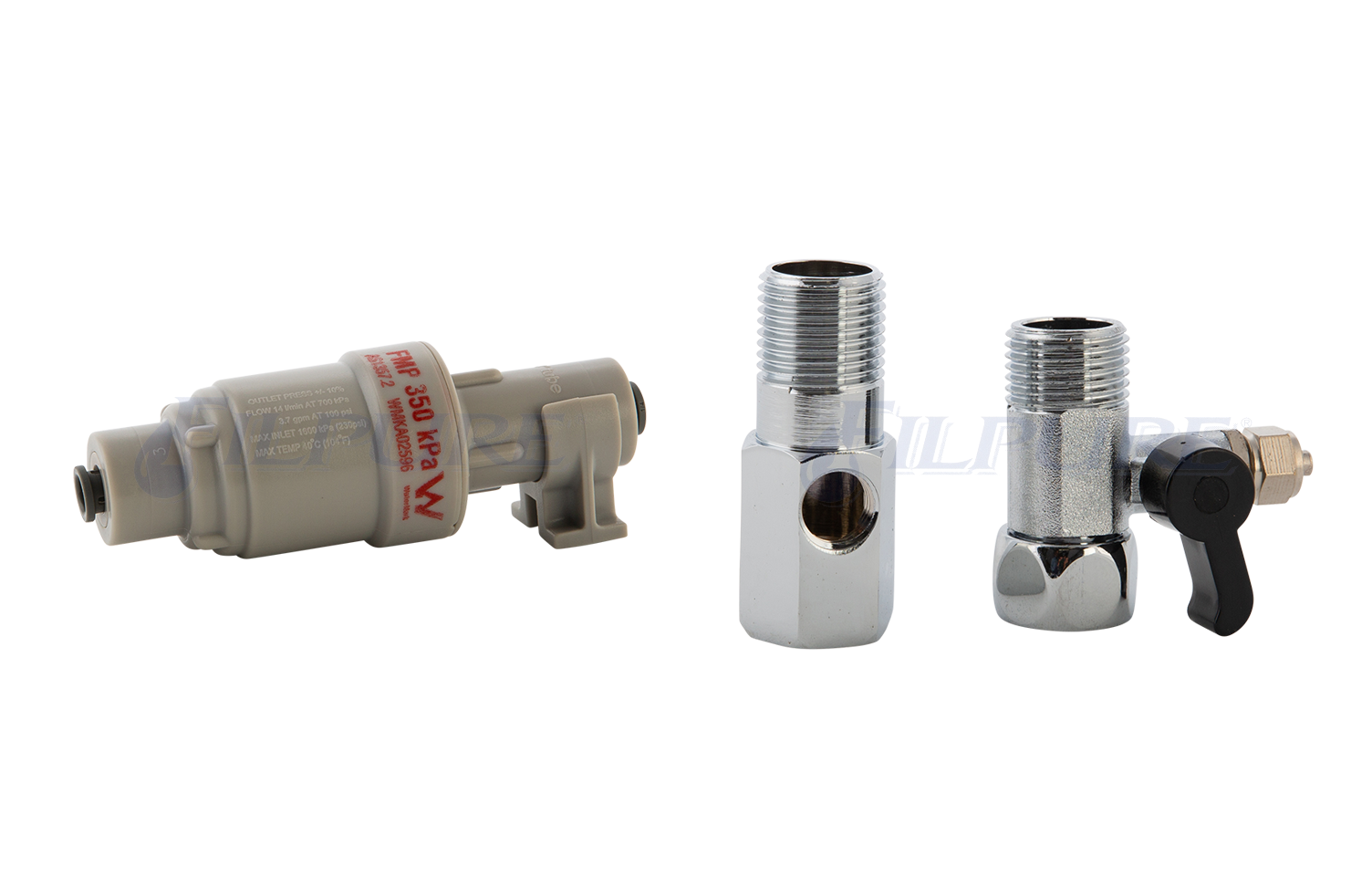Reduce High Blood Pressure with Water
27% of all deaths in Australia are attributed to disease of the circulatory system [www.abs.gov.au]- heart disease? High cholesterol and high blood pressure can lead to serious heart conditions. But, these two causes can be prevented.
Let’s start with high cholesterol. 6.1% of all Australians had high cholesterol, But first, just what is cholesterol? Cholesterol is a waxy, fat-like substance called a lipid that is found inside cells and blood. It is produced naturally in the liver, but some of the “bad” cholesterol comes from the food we eat, mainly in animal fats. While too much cholesterol can be harmful, a certain amount is necessary for bodily functions, such as making cell walls and acting as a building block to produce various hormones, bile acids, and Vitamin D.
Having too much cholesterol can block blood flow, resulting in a thickening and hardening of artery walls, a disorder called arteriosclerosis. Since this also narrows the arteries, blood flow can be slowed down, or even blocked. With less blood, the heart, therefore, gets less oxygen. That can result in chest pain, heart attack, or something as drastic as death. Lowering your blood cholesterol level is one of the best ways you can decrease your risk of heart disease. And, even if your cholesterol is close to the desirable range, 200 milligrams per decilitre of blood, you can lower it and reduce your risk of heart disease.
With all this thickening going on, water can play a very important role. Drinking water can thin the blood, making it a natural way to help the blood pump more smoothly. When the body is dehydrated, the blood becomes acidic which can lead to a build-up in LDL levels of cholesterol. Drinking plenty of water will keep your blood ways clean and eliminate the excess build-up of cholesterol waste from the body. Drinking plenty of water will keep your blood ways clean! Moreover, drinking lots of water can improve your metabolic rate, which may help you lose weight. Since exercise, along with a healthy diet, is an important contribution to the lowering of cholesterol, once again, water needs to drink to replenish what was lost. Consumption of water, so you are fully hydrated, can increase your metabolic rate!
Does Drinking Water Lower Blood Pressure and Cholesterol?
Let’s move on to high blood pressure, also known as hypertension. Blood pressure refers to the force of blood pushing against artery walls as it makes its way through the body. Just like air in a tire, blood fills arteries to a certain capacity, and anything over that capacity can have damaging effects. (Ever have too much pressure in your tires?) Just like high cholesterol, high blood pressure can threaten healthy arteries and lead to life-threatening conditions such as heart disease and stroke. And what’s scary is that there are not any real symptoms which is why high blood pressure is known as the silent killer.
Hypertension can be combated in many ways, such as quitting smoking, stopping drinking alcohol, or losing weight. Water can also help lower this pressure, as blood is mainly comprised of water. Excessive salt consumption can adversely affect blood pressure, but luckily sodium can be flushed out of the body by drinking clean purified water daily. So, drinking a healthy amount of water each day can maintain a healthy heart but what happens if we don’t drink enough water? Dehydration will affect your blood pressure adversely. Our kidneys clean our blood. When we are dehydrated and have high blood pressure, the blood flow to our kidneys is reduced which makes our bodies think they are low on water. They will thus react by telling the brain to constrict veins and arteries, which will make the blood pressure even higher.
Importance of Water Quality
The quality of the drinking water can also affect our cholesterol levels. Animal studies have shown that chlorine in drinking water can raise levels of plasma cholesterol. This is something we must be aware of because most tap water in Australia is chlorinated. Therefore, it is a good idea to install a quality water filtration system that can remove chlorine and other harmful chemicals from your drinking water.
What To Do Next
Drinking plenty of clean water can help combat high cholesterol and high blood pressure. Remember it is also never too late to improve your heart health with the help of regular exercise, balanced nutrition, and a positive outlook on life. The human body is very resilient and if you treat yourself well, you will be surprised by your body’s natural ability to heal itself and lower bad cholesterol. And yes, our body’s natural ability to heal can be improved with a healthy weight and diet. It makes water drinking more essential to our daily life. Here’s drinking to your health and achieving your goals. We know you can do it!
Water and Arthritis
Water does many things for our bodies. But for someone suffering from arthritis, one of the most important tasks H20 has is lubing up joints for maximum and pain-free movement. Arthritis, meaning “joint inflammation” is the general term for many sub-forms of the disease. There are rheumatoid arthritis and osteoarthritis as well as gout, but these are just a few of the about 100 forms. About 3.6 million [15%] Australians suffer from one form or another.
Arthritis involves the breakdown of cartilage. Cartilage normally protects a joint, allowing it to move smoothly. Without the normal amount of cartilage, the bones rub together and cause pain. Symptoms of arthritis cause joint pain, swelling, stiffness, limited movement, redness of the skin around the joint, and warmth around a joint. Arthritis, as well as osteoporosis, has been linked with fluoride exposure which seems to aggravate and increase the activity of rheumatoid arthritis. It is a known fact that higher doses of fluoride ingestion can weaken bones and ligaments.
Why is Fluoride in our Tap Water?
The purpose of adding fluoride to tap water is to reduce tooth decay; however, it makes more sense to just use fluoridated toothpaste and mouthwash for that purpose. Fluoride’s benefits are far outweighed by the health problems it can cause to the brain, thyroid gland, bones, and kidneys when swallowed. Thus, drinking fluoridated tap water has few benefits, but many risks. One way to avoid fluoride is to purchase a water filter. Some water filters do not effectively remove fluoride so it is important to purchase the right kind of filter. Thus, if you are looking for a water filter to remove fluoride or any other heavy metals make sure it uses “reverse osmosis” technology. The F4, F5,& F6 Purification systems installed in the home or office will remove 99.9% of the fluoride as well as many other contaminants in your drinking water.
How to Avoiding Skeletal Fluorosis
A more debilitating disease with similar symptoms of arthritis is skeletal fluorosis. Skeletal fluorosis is a bone disease caused by excessive consumption of fluoride. Skeletal fluorosis has several stages. In the first two stages (preclinical), the patient feels no symptoms but changes have already taken place in the body. In the first stage, biochemical abnormalities occur in the blood and bone composition. Symptoms include pain in the bones and joints, sensations of burning, prickling, tingling, muscle weakness, and chronic fatigue. In the second stage, the pain in the bones becomes constant and some ligaments begin to calcify. According to the National Research Council, “Crippling skeletal fluorosis might occur in people who have ingested 10-20mg of fluoride per day in 10-20 years.” Common causes of fluoride exposure come from daily contact with and occasional ingestion of fluoridated toothpaste, mouthwash, or tap water.
Water Can Provide Joint Pain Relief and Healing
Since arthritis pain and stiffness are a result of joints not being properly cushioned, water can help by lubricating and providing padding for these areas. Also, these symptoms are a result of increased friction between the cartilage surfaces. When the joints move, a suction pulls water from the bone marrow to the joint cavity– if there is available water. If there is not enough water, the joints can’t glide as they should. So, an increased water intake and being hydrated can keep that water supply there– and reduce some of the pain. Lack of hydration will produce friction and shearing stress at the contact point of the joint. In the case of severe dehydration, dry cartilage may die and peel from the contact surface of the bones. Also, with gout, it can remove uric acid and other toxins. Gout is a painful disease that is caused by deposits of uric acid crystals in the bloodstream, ending up in the joints of the body. It is characterized by pain, swelling, redness, and heat/inflammation as well as stiffness in a joint or joints. Gout is also a form of arthritis, or inflammation of the joints, and is more common in men. Water will also provide relief for people suffering from gout.
Exercise to Strengthen Your Bones and Muscles
Like in osteoporosis, water exercise is also a very effective means of both reducing pain and staying in shape. When one has arthritis, they usually do not want to move their joints more than they have to. However, if staying in one place too long, the ligaments can tighten causing more pain. Regular exercise can help with flexibility and strength, as well as get the body in shape to do everyday tasks. Water exercise is a gentle way to exercise joints and muscles. Just being in the water allows the muscles to relax. The soothing heat and buoyancy of warm water make it a safe, ideal environment for relieving arthritis pain and stiffness. Also, water creates resistance which builds muscle strength. Using a spa can massage your body and help you relax tight muscles.
Living Comfortably with Arthritis
To summarize, arthritis is a disorder that can be treated and managed with proper care, nutrition, and exercise. People with joint pain should make sure they are well hydrated at all times and avoid drinking fluoridated tap water as water plays a big role in healing joint pain. Exercise is also beneficial. Just because you have arthritis does not mean you must limit all movement, so go and enjoy more relaxing exercises such as walking, yoga, swimming, and golf!
Asthma and Its Relationship with Water Contaminants
How asthma can be related to water contaminants?
As we know, asthma is an airway disease that can cause a person to wheeze, cough, be short of breath, and experience tightness in the chest. Common triggers of its symptoms in some people are pet dander, dust mites, mold, pollen, respiratory infections, exercise, cold air, tobacco smoke, stress, and drug allergies. For your information, exposure to water contamination may also affect people with asthma. About 2.7 million [10.7%] Australians suffer from Asthma. Some water contaminants which may worsen respiratory and other health conditions for some people are as follows:
- Chlorine – Chlorine helps fight waterborne diseases like cholera and typhoid, but can lead to respiratory problems as well. Yale University researchers have found that inhaling chlorine-disinfected drinking water triggers a nerve receptor that protects healthy people by inducing sneezing, coughing, and irritation, but can cause major problems for people with asthma.
- Fluoride – Fluoride is added to most municipal drinking water supplies to help fight tooth decay in children, but it can cause health issues for people with allergies or respiratory conditions. There are documented cases of adults as well as children who suffered severe allergic reactions to fluoride.
- Nitrogen oxide – Nitrogen oxide is one of the chemicals in acid rain or acid precipitation. It is produced in firing processes involving extremely high temperatures, such as in utility plants and automobiles, as well as in chemical industries such as fertilizer production. When this dangerous gas gets into the groundwater supply, it can cause damage to the respiratory organs by attacking the membranes in them, increasing the chances of respiratory diseases, and in some cases worsening the health conditions of people who have already been diagnosed with respiratory issues.
Drinking filtered or purified water can improve the conditions of some people with asthma or other respiratory diseases. There are a few alternatives to purifying drinking water. Water distillation is moderately successful at removing many contaminants, but they are expensive and wasteful. Bottled water can sometimes contain more contaminants than tap water. The best technology today for treating water contamination is The F4, F5,& F6 Purification systems. When compared to any other treatment alternatives, it will remove most contaminants to make the water healthier. The most common types of water filters in use today are drinking water filters, whole-house water filters, and shower water filters.
Asthma & Allergies
Asthma and allergies can come along with each other. An allergic response occurs when your immune system mistakenly identifies a harmless substance such as pollen or dust as a dangerous invader. Antibodies attack the allergen in an attempt to protect your body from the substance. The chemicals released by your immune system lead to allergy symptoms such as nasal congestion, runny nose, itchy eyes, skin reaction, etc. For some people, this same reaction also affects the lungs and airways, leading to asthma problems.
Most sufferers of asthma and allergies attempt to modify their environment to help cut down on sneezing, sniffling, and wheezing. Although physicians focus primarily on cutting down on air pollutants and toxins in the home, sometimes they overlook the part that ordinary tap water can play in making asthma and allergies worse.
Chlorine & Chemicals
Testing your drinking water might be a good idea if you or a family member has asthma and allergies. A Belgian study recently concluded that chlorine, a common chemical added to water to help kill bacteria, could be making asthma in children worse. Fumes from chlorine in pools, and even in the shower, could trigger an attack for some people with asthma and allergies. Those who suffer from asthma and allergies are often sensitive to gases that are produced when chlorine sanitizes bacteria in sweat or urine. These gases can build up in an enclosed shower, irritating the lungs of children and adults who have asthma and allergies.
Conditions caused by chlorine exposure:
- Respiratory conditions (Nose, throat, lungs, asthma, bronchitis)
- Dry or brittle hair
- Dry skin, dandruff, itching and rashes
- Eye irritations
Other chemicals in drinking water can affect people with asthma and allergies. Fluoride is added to most municipal water supplies to help fight tooth decay in children. But for some people with asthma and allergies, fluoride can compromise their health. Allergists for decades have known that documented cases exist of both adults and children with asthma and allergies who have suffered severe reactions to fluoride. In 1967, the Annals of Allergy published a study finding infants, children, and one adult who had allergic skin reactions and asthma attacks after being exposed to tap water treated with fluoride. Households with members who have asthma and allergies can filter their tap water with reverse osmosis filtration to eliminate chlorine and fluoride from their water and conveniently drink from home instead of buying bottled water.
Drink More Water
A recent study found that dehydration could play a significant role in asthma and allergies. One researcher believes that the lack of water vapor in the lungs causes the airways to constrict and for the asthmatic’s lungs to produce mucus, the two factors that cause an asthma attack. The researcher recommends that people with asthma drink at least 2 liters of water every day, along with a pinch of salt, and avoid caffeine. This is because salt regulates water in the body and caffeine robs the body of needed water.
What Else Can I Do?
People with asthma and allergies can control their home environment even more by filtering chlorine and fluoride out of their tap water, allowing everyone to breathe easier. This is easily done for drinking water, but what about for our showers and baths? There are shower filters in the market that will reduce the amount of chlorine, but they are only moderately effective. This is because the small amount of media in shower filters coupled with the fast flow rate of the water reduces the contact time with the media and its effectiveness. These filters also cannot remove fluoride or other chemicals from the water. Luckily, there are whole-house filters that are specifically designed to remove chlorine, chloramine, and even fluoride from every faucet in the home. These filters come in 10” and 20” housings and can be used together to remove practically all chemical allergens to provide clean, spa-quality bathwater. Other simpler methods to reduce exposure to water irritants include taking shorter showers, avoiding excessively hot showers (heat increases steam inhalation and opens up the pores for great absorption), and shutting the water off while soaping your body. These techniques will help reduce your exposure to toxins if purchasing a filtration system is not an option. The good news is that there are real and effective treatment solutions for people who suffer from sensitivities to chemicals in the water. Understanding the health effects is the key, and now that you are aware of the problem you can take the proper action to reduce your allergies and asthma and improve your health. Breathe deeply and breathe well. Today is a clear new day!
Coughs and Cold
We all succumb to a cold and/or cough a few times a year. Each year, Australia suffers through 75 million colds, refer to healthdirect.gov.au. Children catch up to 10 colds a year, while adults average up to four. Can you imagine the total cost spent on clinical visits due to seasonal colds and flu?
The runny nose, fever, sore throat, etc are all familiar (and dreaded) symptoms of the common cold, an ailment that doctors and pharmaceutical companies have still not made a miracle cure discovery. The over-the-counter drugs available only battle the symptoms, and not the cause. The fact of the matter is that little can be done for a cold or flu virus once it sets in, except to ride them out.
The best way to fight a cold is just to prevent it from overtaking the body in the first place. There are ways to prevent the flu and colds, including washing hands frequently, taking vitamins, and avoiding people who have them. But perhaps the most important and easiest form of prevention of the common cold is sometimes also the most overlooked: sufficient fluid replacement. Fluids flush out harmful impurities and toxins in our bodies, and aid in the production of mucus. Since the body uses even more fluid than usual when fighting off a cold or the flu, the body can be left severely dehydrated without it. Dehydration, among many things, can result in high fever. This is why extra water should be ingested when suffering these symptoms. The lack of water can make the cold and/or cough worse.
Water is the fluid of choice, but juice, tea, and soup broth are also acceptable. Water in other forms can be of help too. Hot beverages can be soothing to sore throat and can even help with decongestion. Also recommended is gargling salt water, and inhaling moist air possibly through a humidifier.
In natural medicine, colds are looked at as the body’s way of detoxifying. During the autumn and winter, our bodies attempt to harmonize with the season. The body then condenses waste and cleanses excess mucus and congestion from tissue, which will improve circulation and get the blood pumping to keep us warm. However, this process gives flu-like symptoms. Drinking more water will help the body detoxify. Exercise and sweating can also help keep the body clear of toxins.
In the way of coughs, drinking the proper amount of water will keep the mucus lining in the lung area thin and lubricated, making it easier to have a productive cough. Water will also help loosen phlegm, and just plain soothe an irritated throat.
Not only can water help prevent a cold, but it can also help sufferers feel better. However, people should only drink clean purified water when they are sick because water that is contaminated can add more toxins and stress to our bodies. By drinking plenty of clean water, we can build up our immune systems which will allow us to stay healthy and enjoy the wonders of the winter season. Below are some natural tips to prevent colds from occurring in the first place.
Natural tips to prevent a cold
- Aerobic exercise – Regular exercise helps increase the body’s natural virus-killing cells.
- Yogurt – Some studies show that eating yogurt can reduce your susceptibility to colds by 25%. The bacteria in yogurt may stimulate the production of immune system substances that fight disease.
- Phytochemicals – “Phyto” means plants. The natural chemicals in plants and vegetables give food a supercharged boost.
- Don’t drink or smoke – Smoking dries out your nasal passages and damages cilia. These are hairs that line the mucous membranes in your nose and lungs and work to sweep colds and viruses out of the nasal passages. Alcohol suppresses the immune system and dehydrates the body.
- Relax – There’s evidence that when you put your relaxation skills into action, your interleukins, and leaders in the immune system respond against cold and flu viruses.
Water and Gallstones
Some people who have had them removed like to keep them in jars. We’re talking about gallstones. Perhaps people are marveled that something like that can form in the body, explaining why “amateur mad scientists” may like to keep body parts in jars after surgery. But as neat as they look rattling in that jar, gallstones are indeed painful. How do these stones form, and how can they be prevented? We’ll address some of those issues now.
[put an image of gallstones showing internal stones]
Gallstone disease is a very common problem in Australia, with 25% of the population developing gallstones before the age of 50 years. most of which are usually tiny, but sometimes golf ball size crystallized pellets form in the gallbladder. These stones cause painful spasms in the abdomen and can be accompanied by nausea, vomiting, heartburn, gas, and bloating. Gallstones form due to mainly dietary reasons. Looking closer at a gallstone, we can find that it is made up of cholesterol deposits left over from the body’s bile-making process. About three cups of bile are made in the liver each day, which is stored in the gallbladder, and eventually released into the small intestine to aid in digestion, specifically the breaking up of fats. However, when there are high concentrations of cholesterol, stones can form.
Gallstones may lead to other complications such as inflammation of the gallbladder, blockage of the bile or pancreatic duct, or even gallbladder cancer. But gallbladder cancer is rare even though the chance of the risk is elevated.
There are two types of gallstones:
- Cholesterol Stones – The most common type of gallstone. Mostly made of hardened cholesterol and are usually yellowish-green in color.
- Pigment Stones – Mostly made of bilirubin and are usually small and dark in color.
Cholesterol stones are the most common type of gallstone to develop, occurring in approximately 80% of patients with gallstones. Sometimes stones are tiny enough to pass, and some are too large and must be surgically removed. Sometimes, if they are large enough, they can also block the bile duct leading to the small intestine, which could cause serious infection. A gall bladder can have just one large stone, hundreds of tiny ones, or a combination. The majority of individuals with gallstones do not have any symptoms. However, 20% of patients with gallstones report intense pain in the upper abdomen and the back between the shoulder blades. Bloating and heartburn can also occur.
Also, cholesterol is not the only culprit- high sodium diets can also help create stones because if there is too much salt in the blood, the water supply goes down. Women are more likely to have stones. But, aside from the risk factors, some things can be done to prevent the stones- and water consumption is one way to make those stones roll away. There is no guaranteed way to prevent gallstones, but there are many things you can do to lower the risk.
Eat healthy and exercise
Healthy fats: Healthy fats found in avocados, flaxseed, olive oil, fish oil, and omega-3 fatty acids are called mono-saturated fats. These healthy fats may lower the risk of gallstones. In contrast, saturated fats also found in fatty meats, butter, and other animal products can increase the likelihood of gallstones and high cholesterol.
Fiber: Those who eat diets low in fiber and high in fat may be more susceptible to getting stones, as are those who are obese, who have inflammatory bowel disease and other digestive disorders. Fiber can be found in whole-grain breads, cereals, and vegetables, and can help you lose weight and prevent gallstones.
Fruits, veggies, and nuts: Consuming these foods will also aid in the prevention of gallstones.
Sugar and Carbs: Carbohydrates are converted to sugar in the body and too much sugar in your diet may cause gallstones.
Meals: Try to have a usual mealtime each day and don’t skip meals. Skipping or fasting can increase the risk of gallstones.
Exercise: It is recommended to exercise 30 minutes, 5 times a week to help keep your weight down. Along with eating a low-fat diet, exercising is also an effective way to help you stay close to a healthy weight and lower your cholesterol and triglyceride levels.
As mentioned above, low-fiber diets can contribute- so a diet high in fiber can help prevent stones. Also, keeping at your body’s ideal weight will help.
Water: drinking plenty of pure water, at least six to eight glasses per day, will help keep bile production running smoothly. Adequate water content in the liver for bile is crucial. Aside from just for bile, pure water can also aid in flushing cholesterol out of the body in general. So, drink some water and keep those juices flowing for a healthy gall bladder.
Water and Beautiful Skin
It’s no wonder that spas across the nation are turning toward a filtered water system. Many spa owners claim that regular tap water contains bacteria and minerals which can clog pores. Over time, this can mean dull skin.
Experts say the cleaner the water, the better it can clean. The purer the water, the purer the skin. (Seems like a no-brainer.) Filters help weed out things like chlorine and heavy metal. The cleaner, softer water, they say, attributes to not only clearer but also softer skin. Heavy water can irritate the skin, even making it red. Also, reverse-osmosis filters make water molecules smaller, which can penetrate and hydrate the skin better. According to an MSN Lifestyle article, Diane Somerville (a Hollywood facialist) swears by it
But, while spa-going is a luxurious way to spend the afternoon, it’s not practical for everyone’s wallet, every day. With a filtered water system at home, cleansing the face in your sink can have the same radiant effect on your skin.
Some critics say that these metals aren’t dangerous to the skin. But- how can a glowing face be wrong? So, perhaps the search is over. The fountain of youth could be springing at your home, after all.
The trend of filtered water aiding in skincare has also been bottled up, beyond faucets. Upscale bottled water brand Evian sells water sprays for the skin. They claim it can refresh and rejuvenate the skin. This product appeals to jet setters or office workers whose faces and skin may get dry from the cabin or cubicle air, as well as to athletes to soothe the sun or cool a perspired face.
So, the word from spa owners to water bottlers is that filtered water is far better for keeping a beautiful complexion. And- we also can’t forget that being hydrated always helps skin glow as well. From inside out, filtered water is “in for your skin!”
Water and Osteoporosis
Do you know that over 1 million Australians suffer from osteoporosis. of those aged 50 years and over,66% have osteoporosis or osteopenia. There are over 173,000 Brocken bones each year due to poor bone health. which means “porous bones.” This disease is characterized by low bone mass and structural deterioration of bone tissue. Thirty-four million suffer from low bone mass but have not been diagnosed with the disease.
There are some risk factors that we cannot change, such as gender and race. However, other risk factors are indeed preventable. And something as simple as water can aid in both preventing and coping with this disease. But just as water can help- it can also harm.
Fluoride-tinged water can increase the risk of bone fractures by 20-40%. It can also contribute to abnormal bone growth. Many municipalities could have fluoride in their water systems, and the only way to remove it is by distillation or with a reverse osmosis water filter. Those who are at risk for osteoporosis should invest in a good-quality filter to make sure fluoride is removed. Those with the disease should do the same because of the fracture risk.
Calcium– or lack thereof– is the first and foremost nutrient associated with osteoporosis. This element is essential in building and maintaining bone and bone tissue. While milk and supplements are the primary sources for this, there is also calcium-rich mineral water available.
Aqua therapy is also a great way to stay in shape and help relieve the pain involved with osteoporosis. Since exercising is crucial to health and much exercise can be a risk factor in falling and breaking a fragile bone, those with osteoporosis are caught in a Catch-22. So, water activities are an alternative. In the water, exercising can build muscle and also help reduce pain, improve balance, increase range of motion, and increase circulation. (After being in a pool for a while, there are some other helpful hints for uses of water: see related article.)
It is also smart to avoid smoking, caffeine, and alcohol. So, replacing those beverages with water- a much better alternative will give many other health benefits.
Water and How It Affects The Risk Level for Coronary Heart Disease
Since 1999, some research are conducted 1999 to indicate that there is a good correlation between fluid intake level and coronary heart disease. Whole blood viscosity, plasma viscosity, and blood fibrinogen level are considered to be independent risk factors for coronary heart disease, and they all tend to be elevated by dehydration. Therefore, healthy people who drink adequate levels of plain water generally keep their hydration level up and have a reduced risk of dying from a heart attack in comparison to people who do not drink adequate water.
Water intake and risk of coronary heart disease
The clearest and most consistent association with fatal coronary heart disease was found with water intake. Among men, univariate analysis showed a dose-response relation (p < 0.001). Compared with those drinking two or fewer glasses of water daily (low), subjects drinking from three to four glasses (medium) and five or more glasses (high) had relative risks of 0.65 (95 percent confidence interval (CI): 0.40, 1.05) and 0.46 (95 percent CI: 0.28, 0.75), respectively. Among women, the relative risks of drinking medium and high levels of water were 0.54 (95 percent CI: 0.32, 0.90) and 0.59 (95 percent CI: 0.36, 0.97), respectively. The associations remained virtually unchanged when adjusting for traditional risk factors as well as for fluids other than water, energy intake, diet, exercise, and when weight replaced body mass.
Why may coronary heart disease risk be increased with a higher intake of fluids other than water? Several mechanisms can be postulated. Caffeinated beverages are mild diuretics and thus may raise blood viscosity. High-energy drinks such as juices and regular sodas have osmolarities between 556 and 836 mOsm/kg. Their consumption causes a net movement of fluid from the vascular system into the intestinal lumen, resulting in a rapid elevation in blood viscosity after consumption.
Other fluids probably have a similar impact as long as they do not contain excessive levels of sugar, salt, or other chemicals that the body excretes in water, thus reducing the body’s water content. Although many people could and probably should drink more water than they do, drinking excessive levels of water can flush away essential salts from the body and lead to potential health problems.
Water and Gout
Imagine waking up in the middle of the night, in excruciating pain from a throbbing big toe. This could be a sign of your first gout attack.
Gout is a painful disease that is caused by deposits of uric acid crystals in the bloodstream, ending up in the joints of the body. It is characterized by pain, swelling, redness, and heat/inflammation as well as stiffness in a joint or joints. Gout is also a form of arthritis, or inflammation of the joints, and is most common in men. Gout was once thought of as a disease that only affected the rich and famous, as drinking lots of alcohol and eating rich foods are a cause of the disease. But we know in the current society in which getting nutritious food and a variety of alcohols are more and more convenient, gout not just for the stars!
How gout happens is this: The body produces too much uric acid or does not excrete it with the urine. The excess uric acid may not be able to be removed by the kidneys, which then builds up and may form crystals in the bloodstream, which find their way to their final destination- the joints. Causes of crystal formation include drinking too much alcohol, taking medications that may increase uric acid concentration, eating foods that are high in purines (liver, peas, beans), and being overweight. Experts say that while alcohol is a key factor, metabolism has more to do with it, so weight is important to take into consideration.
Gout begins with an attack, usually in the middle of the night, with extreme swelling and throbbing in the joints, most commonly in the big toe. Gout is a recurring disease. People who have gout may have a few very painful attacks in one or two joints, usually the big toe, foot, ankle, or knee joints. The attack can last a few days or as long as several weeks, and then the symptoms can disappear, not to return for months or years. If left untreated, it can lead to more serious forms of arthritis.
Natural Home Remedies
Water is one of the best home remedies for gout. For starters, since water can serve as a joint lubricant, one who is at risk for gout should be sure to drink plenty of fluids. Also, being that gout can be caused by frequent alcohol intake, which can leave people dehydrated. Beer is the worst type of alcohol to drink in terms of getting gout, as it contains more purines than any other alcoholic beverage.
Water will help dilute uric acid, but the real benefit is in its ability to help excrete the acid. Water makes it easier for the kidneys to excrete uric acid and makes it less likely that it will form crystals, thus hopefully preventing the next gout attack. Dehydration can also lead to kidney infections, stones, and even failure. All this can create that excess uric acid that causes gout in the first place. In addition, people on high-protein diets are consuming more meat, which means they are at risk for consuming uric acid found in their food source. Drinking more water can flush the body with these harmful toxins. Drinking more water can also help someone overweight lose excess weight, or maintain proper weight.
Gout Friendly Foods
Cherries – Sweet or sour, as long as it is fresh! Research shows that cherries have an antioxidant called anthocyanins that help relieve inflammation as well as reduce the flare-ups of gout attacks. Consume about 15 cherries a day, preferably as soon as you wake up.
Apples – The malic acid found in apples is believed to neutralize uric acid and afford relief to gout sufferers.
Mustard – For pain relief, prepare a paste by mixing one part whole wheat powder and one part mustard powder with water. Apply this paste on the aching body part and leave overnight for effective gout pain relief.
Ginger – If you suffer from gout in the toes, mix water and 1/3 cup of ground ginger. Soak the feet in this mixture for 30 minutes which will cause sweating and therefore eliminate uric acid. It is important to bathe afterward, as ginger could cause skin irritation once the skin dries.
There are endless home remedies out there. We are not all hardwired the same way, so don’t give up and continue trying several remedies until you find one that works for you. Several factors beyond dieting influence the course of gout flare-ups; such as the level of emotional distress, including your attitude. Various mind and body techniques such as yoga or meditation can ease the mind which also has a beneficial effect on the body.
Water and Diabetes
Have you ever been dying of thirst and a coworker or friend said, “You know, you may have diabetes?” It sounds like a stretch, but in reality, thirst can be a signal of this disease that is taking America by storm.
So why is thirst linked to diabetes? According to a 1995 CNN.com article, with diabetes, excess blood sugar, or glucose, in your body draws water from your tissues, making you feel dehydrated. To quench your thirst, you drink a lot of water and other beverages which leads to more frequent urination. If you notice unexplained increases in your thirst and urination, see your doctor. It may not necessarily mean you have diabetes. It could be something else.
If you already have diabetes, then you know that you already have to make some changes to your diet. As mentioned above, drinking water in place of sugary options is crucial. Water is, according to diabetes specialists, important for everybody, but especially for diabetes patients, because even a small decrease in the hydration level could cause serious health problems for diabetics. One of the best warning signs that glucose levels are high is thirst. And, water is the best way to quench that thirst and to break down those sugars. Also, to keep the body functioning normally, water should be constant. But, water can be lost through exercise and normal exposure to high temps. With that, being hydrated will help prevent fatigue and help physical performance.
A study presented at the annual meeting of the American diabetes association included 3,615 men and women with normal blood sugar levels at the beginning of the study. Those who reported they drank more than 4.5 cups were 21% less likely to develop hyperglycemia over the next 9 years than those who said they drank 2 cups or less daily. The analysis took into account other factors that can affect the risk of high blood sugar such as physical activity, age, weight, etc. According to this study, people who drink more water could share some unmeasured factor that associates drinking more water and lowering the risk of high blood sugar.
Because pure water has no calories, no sodium, and contains no fat or cholesterol, as stated before it is the best supplement for someone with diabetes. Plus, it also has no caffeine, which is a dehydrator. Sugary juices and sodas do contain water but cannot be counted as part of the “eight-glass-a-day” rule. These drinks must be avoided to prevent increased glucose levels.
High glucose causes your body to lose fluid, and your skin can get dry. It may get itchy or crack which can lead to an infection. Drinking plenty of water will help keep your skin healthy and moisturized. Also, if the glucose isn’t accepted by the body, it will release the glucose through the urine. This procedure uses water from the body so it is important for diabetics to keep their bodies hydrated.
When at home, drinking safe tap water is fine, but when always on the go, a diabetic should carry a reusable water bottle. Bottled water does have its advantages, as it is portable, and actually kind of reminds you to think about drinking water throughout the day. But, if your bottled water of choice is one of those flavored waters with an artificial sweetener, it becomes a soft drink, according to the American Diabetes Association. The ADA does not approve flavored waters with the essence of fruit as great alternatives to plain water.
So, does a diabetic solely have to rely on water as a drink? While diet soft drinks are considered safe for people with diabetes, one should talk to a dietitian or doctor about the amount you should consume. While some here and there could be okay, excess diet drinks can cause more thirst and they can also become addictive, leaving the patient not wanting to consume their water! When it comes to juice, a regular size glass of juice is made from several pieces of fruit– and the carbohydrate grams can add up quickly. Plus, the fiber in juice is much less compared to the whole fruit and the calories add up much quicker too. The same fruit taste could be added by learning to dilute the juice with water and ice so you can get the benefits of water with a fruitier taste.
So in conclusion, pure water should be drunk most often. Bottled water with artificial sweeteners is not highly recommended, but reusable bottled water, in general, is, as it promotes consistent replenishing of fluids throughout the day. And, this water should replace sugary drinks that are said to heighten glucose levers– as well as are linked to causing the diseases in the first place. There is some evidence that proper hydration can help protect against high blood sugar, but this has not been scientifically proven and more research needs to be done. However, drinking water is essential for hydrating every aspect of your body therefore it is important to sip water throughout the day, not just when you are thirsty!
Water and Insomnia
Did you ever jab a friend with a pencil in grade school, and get reprimanded and told that it could cause lead poising? Well, so can water. Lead poising is nothing to joke about, and in fact, can cause many types of disorders, including difficulty sleeping. The sleeping disorder insomnia can be severe, as it can affect one’s work and family life. Many factors can cause insomnia, but let’s explore an environmental factor that can cause this disease, and also how water can treat it.
The statistic is alarming: Australian tap water typically contains copper along with lead because of the brass fittings and plumbing products used in households. based on the 1994 national survey of blood lead levels in the United States, we could reasonably expect 4.5% of the population, or 90 people in every 2000 Australians to be lead poisoned (that is, above the Australian goal of 10 µg/dL or micrograms per deciliter).20 Oct 2022
. Lead, in larger quantities, is considered a metabolic poison and has caused people many untold ills such as damage to the kidneys and liver, nervous, reproductive, cardiovascular, immune, and gastrointestinal systems.
In addition to insomnia, lead consumption in childhood can lead to a lower IQ and impairment in reading, writing, math, visual and motor skills, language, abstract thinking, and concentration. Exposure to toxic metals may contribute to crime and anti-social behavior in children.
Another element found in water that can cause insomnia is, MTBE a chemical added to gasoline to reduce carbon monoxide emissions from automobiles. MTBE has, throughout the years, leaked into groundwater. Reports of hundreds of people becoming ill have come to light and are connected to MTBE contamination in drinking water. Neurological symptoms aside from insomnia include headache, nausea, palpitations, anxiety, and some visual disturbances.
It is important to filter your water to prevent the side effects of these toxic metals, which include insomnia. If it is too late and the disorder has already invaded your life, you must treat it. To treat insomnia, it is best to get a consultation from a sleep doctor, usually a neurologist. They will determine if you need a sleep test to make the diagnosis. There are many medications used to fight this disease, as well as behavioral changes that can also be made.
Similar to alcohol and caffeine, which can influence body rhythms, as sugar can do, it is best to avoid those types of drinks. Some people think they can use alcohol to fall asleep, but it does not help. Also, caffeine and sugars act as a stimulant, so it should be obvious to avoid beverages with either or both to aid in falling asleep. Instead, drinking water- without lead of course- can help insomniacs sleep better.
Another reason insomniacs should drink plenty of water during the day is to stay hydrated. Water is our internal cooling and temperature balance system. Dehydration can lead to an increase of toxins in your bloodstream and can cause irritability in your physical levels of comfort and becomes more noticeable at night. Drinking water throughout the day can flush those toxins out of the body. That said, a healthy body is a more restful body!
Kidneys and Bladder Problems / Stones
Water is so important to kidney and bladder health. Do you know that people who do not drink enough water can easily develop bladder and kidney disorders due to the heavy concentration of urine that is passed?
In 2017-18, 1.0% of Australians (237,800 people) had kidney disease. The prevalence of kidney disease has remained relatively stable since 2011-12 (0.8% of the population or 181,900 people). Males and females had similar rates of kidney disease (both 1.0%), with the prevalence increasing with age.
Bladder
It almost seems like a paradox. The bladder aids in the passing of fluid from our bodies. Yet, to remain healthy, it needs water. The urinary bladder is a hollow organ made up of elastic muscle fibers, which allow it to expand without damage. Ordinarily, the bladder can hold up to 750ml of fluid. According to the amount of fluid collected, pressure is exerted on the walls of the bladder and, as it mounts, this triggers the feeling of needing to pass water, or urinate. A bladder infection (or urinary tract infection, UTI), caused by bacteria getting into the urine, creates the same urge, but often the patient can produce only a few drops of water while suffering pain and discomfort. This discomfort is avoidable. Drinking the recommended 6-8 glasses of water a day will keep the bladder active and bacteria-free. Also, avoiding coffee, tea, carbonated beverages, and alcohol can help, as they irritate the bladder and cause a slight amount of bleeding to occur. When bleeding occurs, bacteria may enter the blood vessels.
If a UTI is left untreated or undetected, it can turn into a kidney infection, as the bladders are connected to the two kidneys through ureters. Both can be treated with antibiotics, but as the infection passes to the kidney, lower back pain may develop as well, making a need for pain medication. This leads us to kidneys…
Kidneys/Kidney Stones
While they don’t sound as important as the heart and lungs, kidneys are very important to our health. The kidneys, along with the liver and or urinary tract rid our body of waste materials. If the kidneys were to stop operating for only two days, it would cause a retention of metabolic toxins, and then uremia would set in. The accumulation of waste products, normally excreted in the urine, would cause metabolic poisoning.
The build-up of bacteria and proteins can cause crystals to form, which are known as kidney stones. These are very painful to pass. Some studies show that dehydration increases the chances of having kidney stones, and drinking plenty of water may very well prevent the formation of them. People living in the southeastern United States may have more kidney stones than people living elsewhere, and it is thought that the cause may be related to temperature and dehydration
Avoiding situations or controlling the other diseases that contribute to kidney disorders may sometimes prevent chronic kidney disease, where patients may have to rely on a kidney machine for survival. The earlier a person can alter factors that damage the kidneys, the better. Among the ways to help prevent chronic kidney disease are:
- Maintaining blood pressure at less than 130/85 mm Hg
- Maintain strict blood glucose control in people with
- Maintain healthy levels of fats (lipids), such as cholesterol and triglycerides
- Stop smoking or using other tobacco products
But perhaps one of the easiest and most effective ways is to avoid dehydration. Dehydration is not only a symptom but also the cause of many ailments, especially kidney infections and other disorders that can lead to more serious matters. If someone is prone to kidney and urinary ailments, they will want to avoid dehydration at all costs. People will want to drink at least 1.5 liters of water per day and will want to promptly treat any illnesses that cause dehydration, such as diarrhea, vomiting, or fever. During hot weather and exercise, it is even more important to replenish fluids that may have been lost through water and even the occasional sports drink. Also, they will want to avoid caffeinated beverages, such as coffee and colas. They increase urine output and dehydrate the body faster, as do alcoholic beverages.
Water and Hepatitis
Many people who attend college or begin work in the medical field may recall having to be vaccinated for hepatitis. In 2020, an estimated 222,559 people were living with chronic hepatitis B (CHB) infection in Australia, representing 0.9% of the population. Only 73% of people living with CHB in Australia are estimated to have been diagnosed. Ranging in unrelated levels from A to E, hepatitis is the broad term for inflammation of the liver. The viruses that cause both A and E can be transmitted via water.
Among other infectious causes, hepatitis A and hepatitis E are associated with inadequate water supplies and poor sanitation and hygiene. Hepatitis starts with a rapid onset of fever, body weakness, appetite loss, nausea, and abdominal discomfort. This could be followed by jaundice within a few days. The disease may range from mild (lasting one to two weeks) to severe disabling disease (lasting several months). In areas highly endemic for hepatitis A, most infections occur during early childhood. The majority of cases may not show any symptoms and nearly all patients recover completely with no long-term effects. However, those over 50 have a more likely chance of having a serious illness result.
Hepatitis A is contagious and can live for a long time in warm environments- about three to four hours. The most common way to catch this is through the fecal-oral route, meaning the virus found in the stool of an infected person can be transmitted through the mouth of another. Aside from food, it can also be transmitted through food, which would happen if an infected person doesn’t wash his hands after wiping, and then makes dinner. This is why hepatitis A is prevalent in areas with poor water supply and people with poor hygiene. If water suppliers are limited, less emphasis is placed on washing hands. The disease can also be transmitted sexually and through IV drug use. Many outbreaks occur among communities of drug users. It is also important to note that outbreaks also occur at daycare centers and homes for the elderly- nappy changing on multiple people means having to wash hands very frequently.
The one good thing about hepatitis A is that like chickenpox, it is rare to catch it twice; the body builds up a defense. Adequate and clean water supplies are the best way to combat this disease. Also, educating on the importance of washing hands- sounds obvious- is crucial in areas of poor sanitary conditions.
FYI: Other types of hepatitis (B, C) are not transmitted through the water. Hepatitis B, like A, can pass in a few weeks. Hepatitis C turns into a chronic illness in more than half the cases, and this is the form of hepatitis that is linked to “life in the fast lane” meaning heavy drug use and multiple sexual partners.

